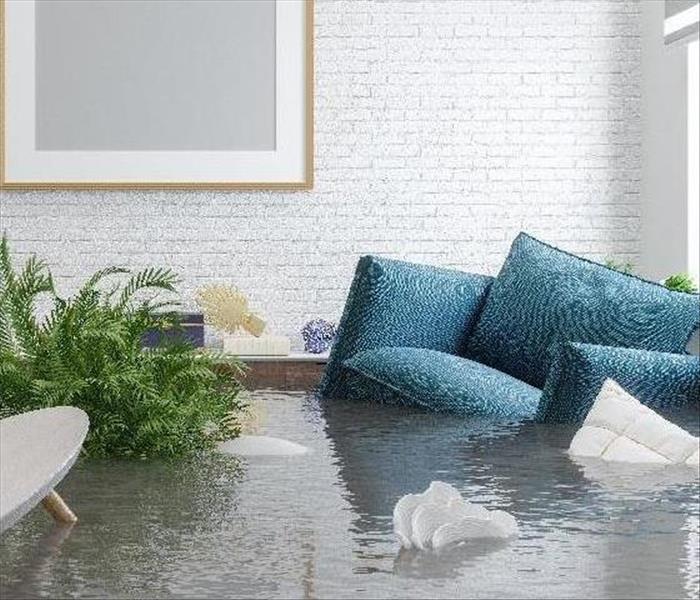What Can I Expect From a Professional Restoration Company During Flood Recovery in Boynton Beach?
5/9/2020 (Permalink)
Feel Confident and Well-Informed When SERVPRO Arrives to Help After Flooding in Boynton Beach
Flooding in your residence is a distressing and disruptive event. Inviting a crew of expert water damage restorers can add to the stress when a homeowner is unprepared for the tasks that must be completed, saving both the structural components and contents of your dwelling after a storm and consequent flooding. Transparent communications between a restoration firm and its customers are vital to complete a project properly.
How Fast Can I Expect a Response from a Flood Loss Contractor?
Flood damage in your Boynton Beach home cannot wait. The resources available to our crews are ready immediately, and we arrive as soon as practical to begin the assessment needed to design an appropriate response to your particular flooding circumstances. After a safety review, crews begin the emergency phase as the project manager continues the evaluation of the overall damage.
What Are Considered Emergency Services During Flood Restoration?
Understandably, you might think the whole project is considered an emergency response. When used in the context of the more extensive process, emergency services refer to:
Securing your property
• Boarding up windows and doors
• Tarping roofs
• Erecting supports if walls or ceilings have weakened
Placement of barriers
• Barriers positioned on the floors can keep water from moving into dry areas of your home.
• Containment of the work area is another type of barrier using 6-mil polyethylene to create one or more smaller spaces to prevent drift of airborne contaminants and debris during controlled demolition and cleanup.
Silt and mud removal
We break out the shovels to reduce the load of solids that can sweep in with the floodwaters. Pumps and extractors function more effectively if most of the debris is removed first.
Aggressive water extraction
Pumps remove water deeper than two inches, and then we switch to truck-mounted extractors. The advantage of this equipment is speed and capacity, as well as our ability to run both types without using your home’s electricity, often temporarily shut down for safety or storm damage reasons. We also can contain the floodwaters for lawful disposal as a hazardous substance.
What Are the Goals of the Restoration Company During the Emergency Phase?
SERVPRO managers and technicians are always aware of how crucial the customer’s input is during all phases of the flood restoration project. When we first meet with you, our goals are:
• To open communications in a supportive and respectful manner, making you feel at ease while educating you about the reasons for our actions.
• To listen to you and do what we can to minimize disruptions to your and your family’s day to day activities.
• To protect both the contents and the structure of your home.
• To remove as much of the floodwater as possible.
• To start the drying process by testing for water migration and moisture levels of affected building materials.
• To try to make your surroundings as safe and comfortable as possible, including addressing air quality and containing the work area so you can have quiet enjoyment of unaffected space.
Why Are Technicians Wearing Personal Protective Equipment (PPE)?
Although we do not desire to frighten our customers unduly, we are upfront about the hazards of working with floodwaters. Because the fluids can contain chemicals, sewage, dead animals, and storm surge, flood water is considered Category 3, the most contaminated level we see in our work. Expect our crews to wear hard hats, goggles, masks or respirators, gloves, and protective suits at a minimum. This practice protects our team as we work hard to remove the contaminated water to protect you and your loved ones. PPE protocols also help us avoid tracking hazardous debris into other areas of your home.
What Is Controlled Demolition and Why Is It Needed?
During the aftermath of a flooding crisis, you might be shocked by the extent of the damage. When our crews begin using drills, sledgehammers, or saws to take out some building materials purposely, we understand you wonder why we are adding to the destruction. Planned, strategic demolition helps us complete critical tasks.
Flood Cuts
We might use saws to cut drywall several inches above the waterline. Reasons include:
• Releasing water trapped behind the wall
• Removing materials that are too damaged to restore
• Allowing access to wet insulation
• Permitting warm, moving air to infiltrate wet cavities during the drying phase
Drilled Holes
If the wall can be saved, but water is detected behind it, we pull off baseboards and drill holes to release the fluids and give us a way to direct warm air between walls through hoses.
In brick and cinder block construction, we use holes drilled in mortar joints to release trapped water and aid in ventilation and warm airflow during drying.
You can rely upon the professionals of SERVPRO of Boynton Beach completely during a flooding disaster cleanup. From the project start to finish, we keep you in the loop. Call (561) 413-9754 to start our collaboration now.
For more about Boynton Beach click here.





 24/7 Emergency Service
24/7 Emergency Service
